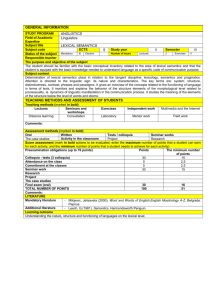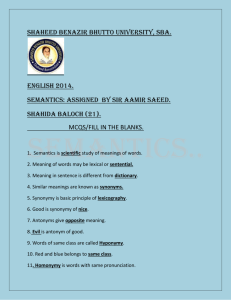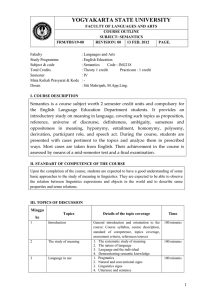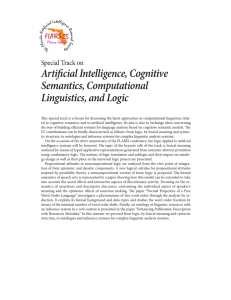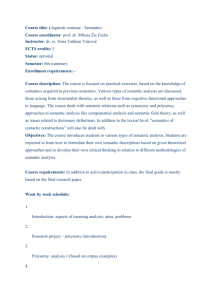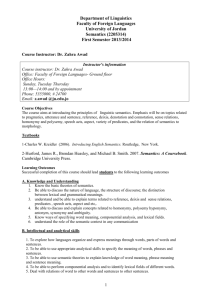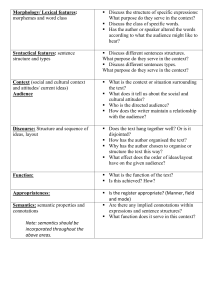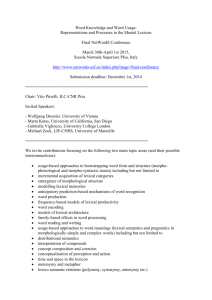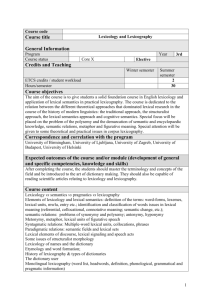CUP. Cruse, DA 1991 Lexical Semantics. Cambridge
advertisement
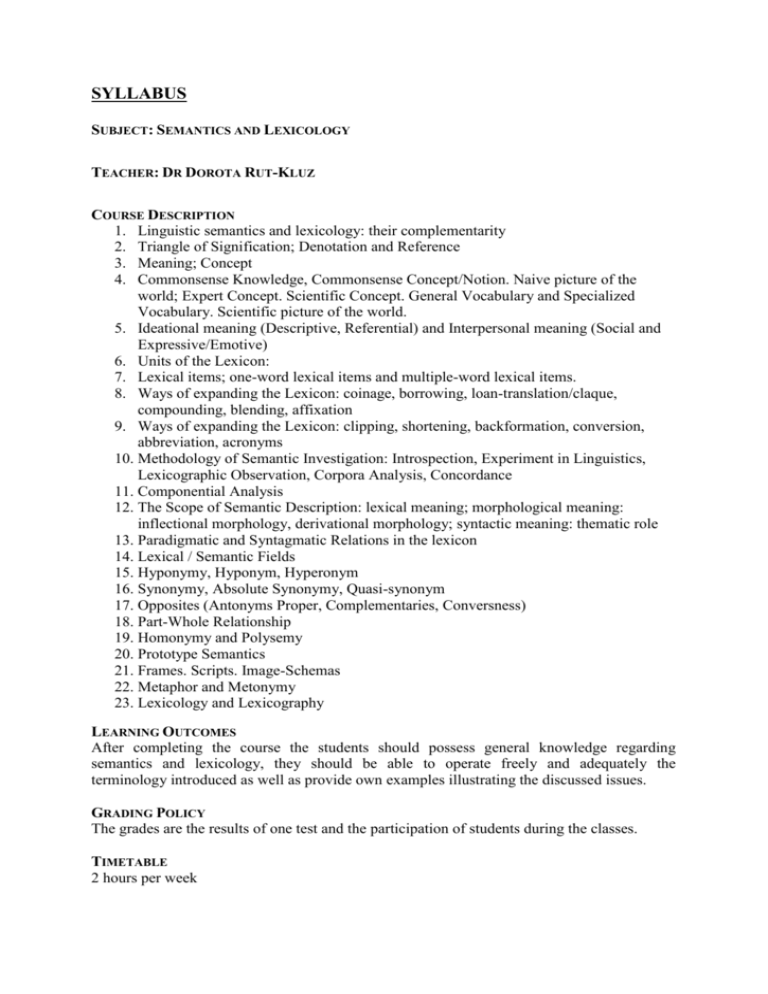
SYLLABUS SUBJECT: SEMANTICS AND LEXICOLOGY TEACHER: DR DOROTA RUT-KLUZ COURSE DESCRIPTION 1. Linguistic semantics and lexicology: their complementarity 2. Triangle of Signification; Denotation and Reference 3. Meaning; Concept 4. Commonsense Knowledge, Commonsense Concept/Notion. Naive picture of the world; Expert Concept. Scientific Concept. General Vocabulary and Specialized Vocabulary. Scientific picture of the world. 5. Ideational meaning (Descriptive, Referential) and Interpersonal meaning (Social and Expressive/Emotive) 6. Units of the Lexicon: 7. Lexical items; one-word lexical items and multiple-word lexical items. 8. Ways of expanding the Lexicon: coinage, borrowing, loan-translation/claque, compounding, blending, affixation 9. Ways of expanding the Lexicon: clipping, shortening, backformation, conversion, abbreviation, acronyms 10. Methodology of Semantic Investigation: Introspection, Experiment in Linguistics, Lexicographic Observation, Corpora Analysis, Concordance 11. Componential Analysis 12. The Scope of Semantic Description: lexical meaning; morphological meaning: inflectional morphology, derivational morphology; syntactic meaning: thematic role 13. Paradigmatic and Syntagmatic Relations in the lexicon 14. Lexical / Semantic Fields 15. Hyponymy, Hyponym, Hyperonym 16. Synonymy, Absolute Synonymy, Quasi-synonym 17. Opposites (Antonyms Proper, Complementaries, Conversness) 18. Part-Whole Relationship 19. Homonymy and Polysemy 20. Prototype Semantics 21. Frames. Scripts. Image-Schemas 22. Metaphor and Metonymy 23. Lexicology and Lexicography LEARNING OUTCOMES After completing the course the students should possess general knowledge regarding semantics and lexicology, they should be able to operate freely and adequately the terminology introduced as well as provide own examples illustrating the discussed issues. GRADING POLICY The grades are the results of one test and the participation of students during the classes. TIMETABLE 2 hours per week TEXTBOOK AND REQUIRED MATERIALS Primary materials: Burkhanov, I. 1998 Lexicography. A Dictionary of Basic Terminology.: Wydawnictwo Wyższej Szkoły Pedagogicznej w Rzeszowie Lyons, J. 1977 Semantics. Vol.1, 2 Cambridge: CUP Secondary materials: Lyons, J. 1996 Linguistic Semantics. An Introduction. Cambridge: CUP. Cruse, D. A. 1991 Lexical Semantics. Cambridge: CUP. PREREQUISITES: Upper-intermediate level of English

